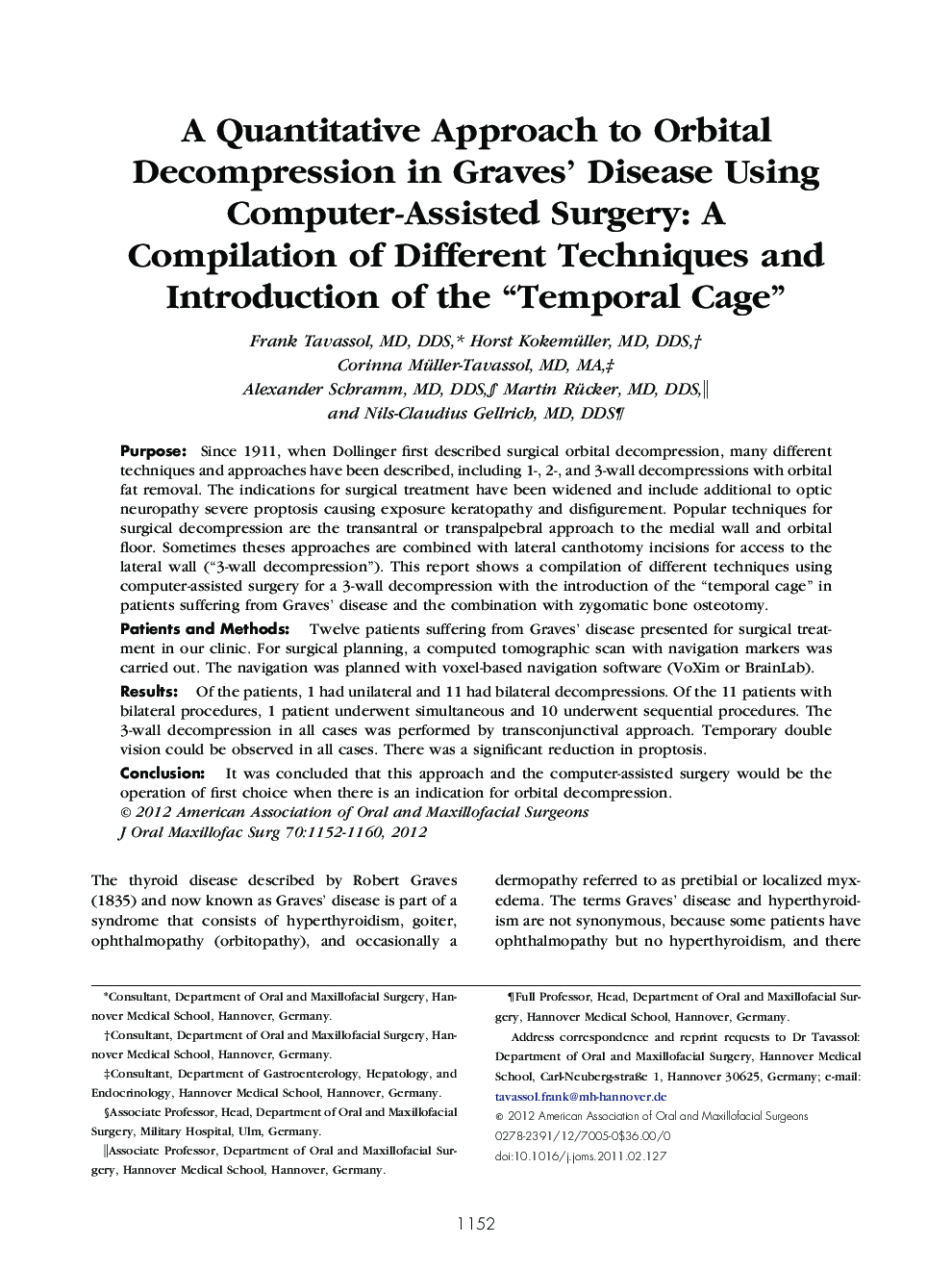| Article ID | Journal | Published Year | Pages | File Type |
|---|---|---|---|---|
| 3153199 | Journal of Oral and Maxillofacial Surgery | 2012 | 9 Pages |
PurposeSince 1911, when Dollinger first described surgical orbital decompression, many different techniques and approaches have been described, including 1-, 2-, and 3-wall decompressions with orbital fat removal. The indications for surgical treatment have been widened and include additional to optic neuropathy severe proptosis causing exposure keratopathy and disfigurement. Popular techniques for surgical decompression are the transantral or transpalpebral approach to the medial wall and orbital floor. Sometimes theses approaches are combined with lateral canthotomy incisions for access to the lateral wall (“3-wall decompression”). This report shows a compilation of different techniques using computer-assisted surgery for a 3-wall decompression with the introduction of the “temporal cage” in patients suffering from Graves' disease and the combination with zygomatic bone osteotomy.Patients and MethodsTwelve patients suffering from Graves' disease presented for surgical treatment in our clinic. For surgical planning, a computed tomographic scan with navigation markers was carried out. The navigation was planned with voxel-based navigation software (VoXim or BrainLab).ResultsOf the patients, 1 had unilateral and 11 had bilateral decompressions. Of the 11 patients with bilateral procedures, 1 patient underwent simultaneous and 10 underwent sequential procedures. The 3-wall decompression in all cases was performed by transconjunctival approach. Temporary double vision could be observed in all cases. There was a significant reduction in proptosis.ConclusionIt was concluded that this approach and the computer-assisted surgery would be the operation of first choice when there is an indication for orbital decompression.
